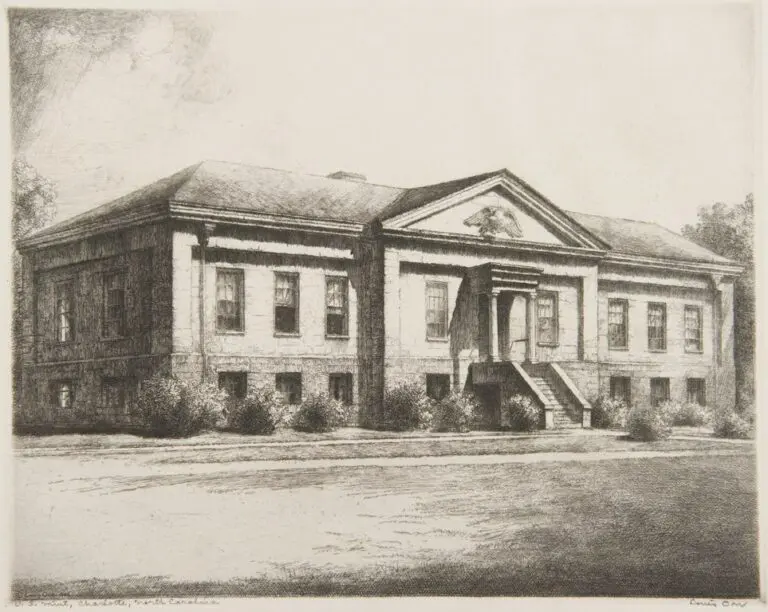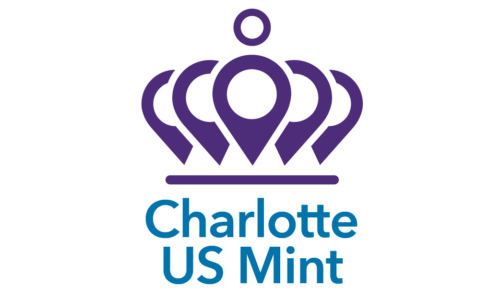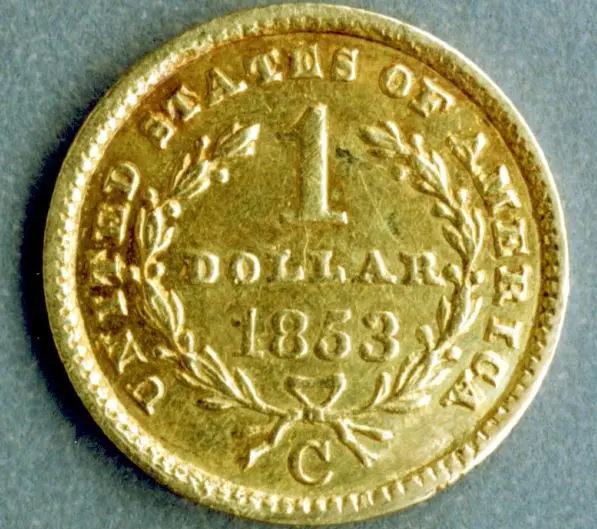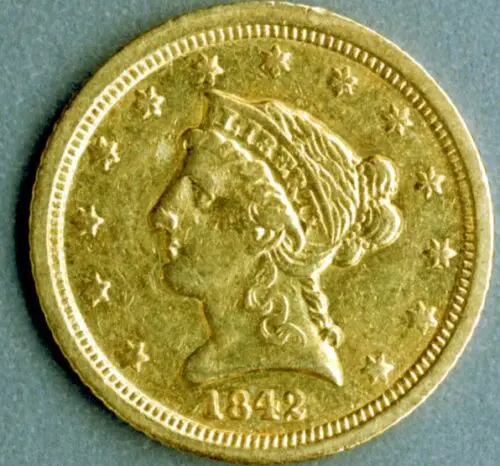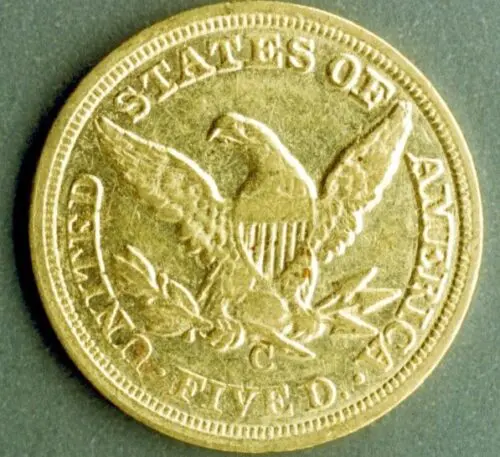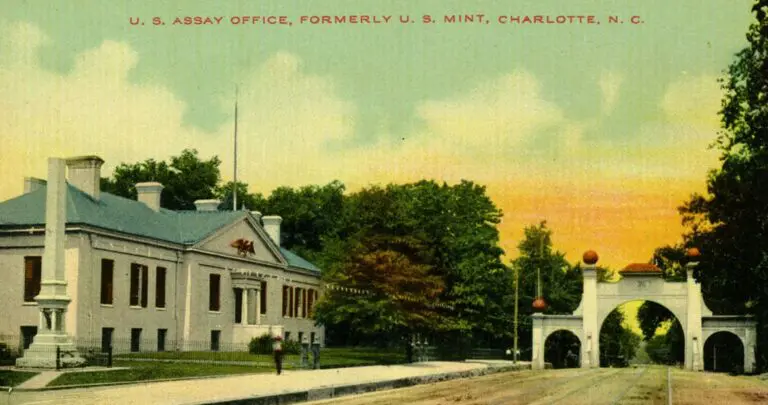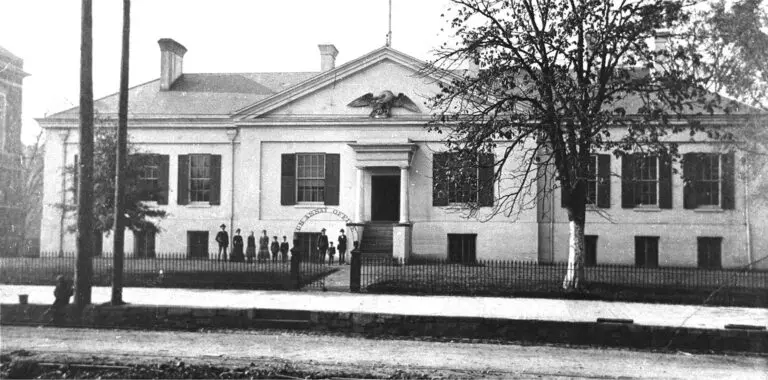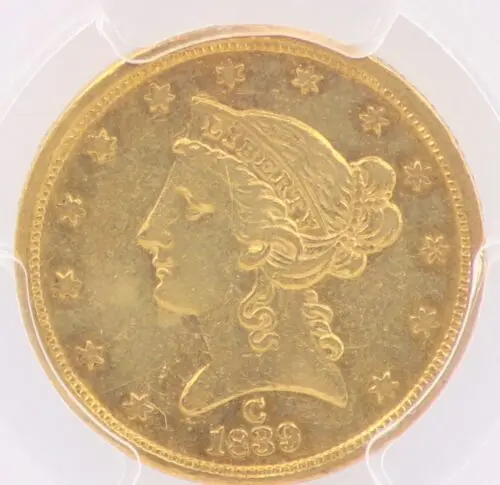When we think of the gold rush, we often think of California and the 49ers that flocked there. Before California, North Carolina was the leading gold-producing state—so much so that it needed a United States Mint branch to process the gold found in the Charlotte region.
The United States Mint branch was initially located in Uptown. The first documented discovery of gold in the United States was in 1799 when a young Conrad Reed, son of John Reed (of Reed Gold Mine), found a 17-pound yellow stone in Little Meadow Creek on the family’s farm in Cabarrus County. He took the yellow stone home to his family. The Reed family could not identify this mysterious yellow stone and used it as a door stop in their home for three years.
In 1802, a jeweler identified the stone as gold. John Reed sold the 17-pound yellow stone to the unknown jeweler for what he thought was a hefty price of $3.50, which the jeweler happily and quickly paid him. It wasn’t until later that Reed realized he had been had, and in 1803, Reed and his family started searching in the Little Meadow Creek for more gold. Reed began turning a profit panning for gold, especially when an enslaved man named Peter found a 28-pound nugget that same year.
By 1804, word had spread that a 28-pound piece of gold had been found, and the North Carolina Gold Rush was on. It lasted over 40 years before the California Gold Rush began. North Carolina miners supplied nearly all gold minted at the US Mint in Philadelphia. Philadelphia was several weeks away, and the road there was treacherous with bandits.
At the time, gold nuggets and dust were hard to spend, and the selling point for gold varied based on the buyer. North Carolina miners were lobbying for a better, safer, and more convenient way to have their gold assayed (the process of determining the purity of an ore, metal, or alloy, in this case, gold) and minted by the United States government. In response, Congress sanctioned the construction of three new mint facilities in Charlotte, North Carolina, Dahlonega, Georgia, and New Orleans, Louisiana.
Construction for the Charlotte Mint started in 1835, and it officially opened in Uptown Charlotte in 1837. The Mint mainly produced gold coins: $1, $2.50, and $5 gold denominations. Only eight design types of gold coin were minted in Charlotte. Coins minted there were struck with “C” to indicate where they came from. 89% of the gold used was from North Carolina, with the remaining 11% having come from elsewhere (9% from South Carolina and 2% from California). The mint produced over one million coins; today, those coins are very rare and incredibly expensive.
The Charlotte US Mint operated from 1837 to 1861, when it closed because of the Civil War. The Confederacy seized the US Mint building in 1861, a month before North Carolina seceded. Some of the $5 coins minted were done under Confederate supervision. The Confederacy never minted any coins for themselves–with the Civil War raging, minting became impractical. So, the Confederacy converted the building into a headquarters and hospital.
After the Civil War, the building’s story took several different turns. It briefly served as an office for federal troops before being repurposed as an assaying office in 1867. This continued until 1913, when the office closed. The building then had a brief stint as a Red Cross station from 1913 to 1917 during World War I, followed by its use as a meeting space for the Charlotte Women’s Club from 1917 to 1919.
The building remained vacant until 1931, when it was slated to be demolished for a post office expansion. A group of private and concerned citizens purchased the building from the US Treasury. The building was relocated to its current location on Randolph Road, where it opened in 1936 as the Mint Museum of Art, North Carolina’s first art museum.
The Mint Museum has many wonderful art exhibitions, and the Mint Museum Randolph keeps an exhibition of the coins that were once minted in the building on display. Today, coins minted at the US Charlotte Mint can go for quite a penny, with prices as high as $21,500!


